
San Benito: The Cultural Hub of San Salvador
Discover San Benito: A blend of culture, cuisine, and vibrant nightlife in the heart of San Salvador, El Salvador's capital city.
Nestled in the heart of San Salvador, San Benito is a vibrant and eclectic neighbourhood that offers a perfect blend of history, culture, and modern amenities. Known for its upscale atmosphere, this area is a magnet for tourists seeking a refined yet immersive experience in El Salvador's capital. San Benito is home to some of the city's most important cultural landmarks. The Museum of Art of El Salvador (MARTE) and the National Museum of Anthropology Dr. David J. Guzmán are must-visit destinations for history buffs and art enthusiasts alike. These institutions showcase the rich heritage and artistic achievements of the country, providing a deep dive into its cultural fabric. The neighbourhood is also a gastronomic paradise. With an array of high-end restaurants, trendy cafes, and local eateries, San Benito caters to all palates. Whether you're in the mood for traditional Salvadoran pupusas or international cuisine, you'll find it here. The nightlife is equally vibrant, with chic bars and clubs offering a lively scene after the sun sets. For those who enjoy shopping, San Benito offers a range of boutique stores and artisanal shops. From handcrafted jewelry to high-fashion apparel, this neighbourhood provides a unique shopping experience that combines local craftsmanship with modern trends. The lush green spaces and well-maintained parks also offer a respite from the hustle and bustle, perfect for a leisurely stroll or a relaxing afternoon. With its rich cultural offerings, diverse culinary scene, and vibrant nightlife, San Benito stands out as a premier destination for tourists visiting San Salvador. Its unique blend of tradition and modernity makes it a must-visit neighbourhood for any traveler.
Local tips in San Benito
- Visit the MARTE and the National Museum of Anthropology for a comprehensive understanding of El Salvador's culture and history.
- Try the local pupusas at one of the neighbourhood's renowned eateries for an authentic Salvadoran culinary experience.
- Explore the boutique stores for unique, locally-made souvenirs and high-fashion items.
- Enjoy the nightlife at the trendy bars and clubs, but remember to stay aware of your surroundings for a safe experience.
- Take a leisurely walk through the neighbourhood's parks and green spaces to unwind and enjoy the local scenery.
San Benito: The Cultural Hub of San Salvador
Nestled in the heart of San Salvador, San Benito is a vibrant and eclectic neighbourhood that offers a perfect blend of history, culture, and modern amenities. Known for its upscale atmosphere, this area is a magnet for tourists seeking a refined yet immersive experience in El Salvador's capital. San Benito is home to some of the city's most important cultural landmarks. The Museum of Art of El Salvador (MARTE) and the National Museum of Anthropology Dr. David J. Guzmán are must-visit destinations for history buffs and art enthusiasts alike. These institutions showcase the rich heritage and artistic achievements of the country, providing a deep dive into its cultural fabric. The neighbourhood is also a gastronomic paradise. With an array of high-end restaurants, trendy cafes, and local eateries, San Benito caters to all palates. Whether you're in the mood for traditional Salvadoran pupusas or international cuisine, you'll find it here. The nightlife is equally vibrant, with chic bars and clubs offering a lively scene after the sun sets. For those who enjoy shopping, San Benito offers a range of boutique stores and artisanal shops. From handcrafted jewelry to high-fashion apparel, this neighbourhood provides a unique shopping experience that combines local craftsmanship with modern trends. The lush green spaces and well-maintained parks also offer a respite from the hustle and bustle, perfect for a leisurely stroll or a relaxing afternoon. With its rich cultural offerings, diverse culinary scene, and vibrant nightlife, San Benito stands out as a premier destination for tourists visiting San Salvador. Its unique blend of tradition and modernity makes it a must-visit neighbourhood for any traveler.
Iconic landmarks you can’t miss
Monument to the Divine Savior of the World
Explore the Monument to the Divine Savior of the World, a stunning symbol of faith and resilience in San Salvador, rich in history and beauty.

Parque del Bicentenario
Experience nature in the heart of San Salvador at Parque del Bicentenario, a peaceful ecological park perfect for relaxation and outdoor activities.

Puerta del Diablo
Discover the breathtaking landscapes and rich folklore at Puerta del Diablo, a must-visit park in Panchimalco, El Salvador.

The Green House
Discover the culinary delights of The Green House in San Salvador, where fresh ingredients and a welcoming atmosphere await every visitor.

Museum of Art of El Salvador
Explore the rich tapestry of Salvadoran art at the Museum of Art of El Salvador, a cultural gem in the heart of San Salvador.

Dr. David J. Guzmán National Museum
Explore the rich heritage of El Salvador at the Dr. David J. Guzmán National Museum, where ancient cultures come to life through captivating exhibits.

Parroquia San Benito
Explore the breathtaking Parroquia San Benito in San Salvador, a Catholic church blending rich history, stunning architecture, and local culture.

Café La Casona
Experience the rich flavors of El Salvador at Café La Casona, a must-visit coffee shop and restaurant in San Salvador.

Zona Rosa San Salvador
Experience the vibrant nightlife, diverse cuisine, and cultural richness of Zona Rosa, the heart of San Salvador, perfect for every tourist's adventure.

Monumento a la Revolucion
Explore the Monumento a la Revolución in San Salvador, a powerful symbol of the nation's resilience and the spirit of revolution.

Unmissable attractions to see
Parque Nacional El Boquerón
Explore Parque Nacional El Boquerón, a breathtaking national park near Santa Tecla, showcasing stunning volcanic landscapes and diverse wildlife.

Museum of Art of El Salvador
Explore the vibrant art scene at the Museum of Art of El Salvador, where tradition meets contemporary creativity in a cultural landmark.

Maquilishuat Park
Experience the beauty of Maquilishuat Park, an urban oasis in San Salvador perfect for relaxation, family fun, and nature exploration.
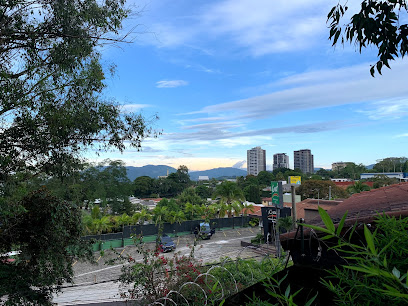
Dr. David J. Guzmán National Museum
Explore El Salvador's rich history at the Dr. David J. Guzmán National Museum, home to pre-Columbian treasures and cultural exhibits.

Millennium Tower
Explore the Millennium Tower in San Salvador, a symbol of innovation and culture offering stunning views and vibrant exhibits for all travelers.
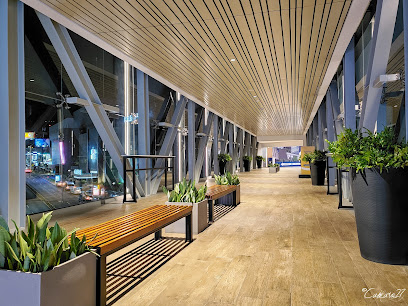
Essential places to dine
The Green House
Experience the vibrant flavors of Salvadoran cuisine at The Green House in San Salvador - where fresh ingredients meet delightful ambiance.

Al Pomodoro
Experience authentic Italian cuisine at Al Pomodoro in San Salvador—where flavor meets tradition in every dish.

Don Li
Discover the essence of Asian flavors at Don Li, where every dish tells a story amidst the vibrant backdrop of San Salvador's culinary scene.

Señor Gaucho San Benito
Experience authentic Argentinian flavors at Señor Gaucho San Benito - a premier destination for steak lovers in San Salvador.

Sal y Pimienta
Discover Sal y Pimienta in San Salvador: A culinary haven blending local flavors with international flair for an unforgettable dining experience.

Andián Bistro & Café
Experience the flavors of El Salvador at Andián Bistro & Café—where every dish tells a story and every visit feels like home.
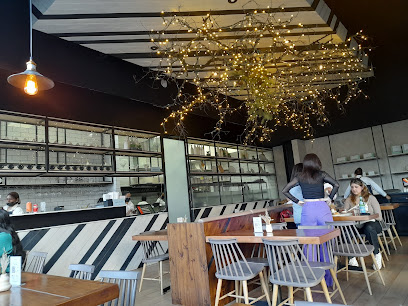
Il Bongustaio
Discover authentic Italian flavors at Il Bongustaio in San Salvador – where tradition meets taste in every bite.

GOURMANDISES
Discover Gourmandises in San Salvador: where local flavors meet global cuisine in an inviting atmosphere perfect for any occasion.

Minh's Cuisine
Experience authentic Vietnamese flavors at Minh's Cuisine in San Salvador; a culinary journey through Vietnam awaits you.

El Peche Cosme San Benito
Discover authentic Salvadoran cuisine at El Peche Cosme San Benito, where every dish tells a story of flavor and tradition.
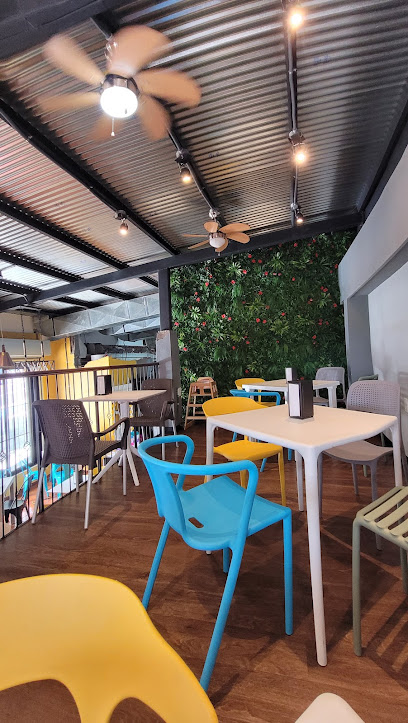
Markets, malls and hidden boutiques
Presidente Plaza
Experience the ultimate shopping and dining destination in San Salvador at Presidente Plaza, where modern retail meets vibrant local culture.

Atrio
Discover incredible savings and diverse shopping options at Atrio, San Salvador's premier outlet mall, perfect for every tourist's retail adventure.

Nize Store
Discover Nize Store in San Salvador, a charming gift shop offering unique collectibles and handcrafted treasures that celebrate Salvadoran culture.

MIMI Boutique & Novias
Explore the exquisite collections at MIMI Boutique & Novias, San Salvador's premier bridal destination for elegant gowns and personalized service.

Merch • Zona Rosa
Discover unique Salvadoran souvenirs and custom apparel at Merch in Zona Rosa, your go-to shop for memorable gifts and keepsakes.

Mios
Discover unbeatable fashion deals at Mios, the top outlet mall in San Salvador, where style meets affordability for all shoppers.

VAIZA
Explore VAIZA in San Salvador for a unique shopping experience combining fashion accessories, clothing, and art café vibes.

Butter
Discover the vibrant world of fashion at Butter in San Salvador, where local craftsmanship meets global style in a chic shopping destination.

Colecciones S.A. de C.V.
Discover the charm of Colecciones S.A. de C.V. in San Salvador, where unique home accessories meet quality craftsmanship.

MINISO
Discover MINISO in San Salvador, a treasure trove of stylish Asian household goods and unique gifts at affordable prices.

Essential bars & hidden hideouts
Andián Bistro & Café
Discover Andián Bistro & Café, where culinary delights meet a cozy atmosphere in the heart of San Salvador, offering a taste of local and international flavors.

Nómada
Nómada: Experience San Salvador's vibrant nightlife with unique cocktails and a welcoming atmosphere.

Strikers
Strikers in San Salvador is the ultimate sports bar experience, featuring live sports, delicious food, and a vibrant atmosphere for all sports enthusiasts.

Cervecería La 20 • San Benito
Discover the vibrant atmosphere and unique craft beers at Cervecería La 20, a must-visit brewery and bar in San Benito, San Salvador.
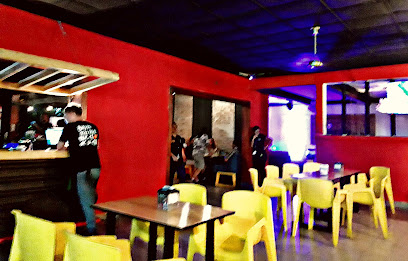
Beer Station
Discover the best brews at Beer Station in San Salvador, where local flavors and international selections create the ultimate beer experience.

Arte Cerveza San Benito
Discover the thriving craft beer scene in San Salvador at Arte Cerveza San Benito, where locals and tourists mingle over unique brews and great vibes.
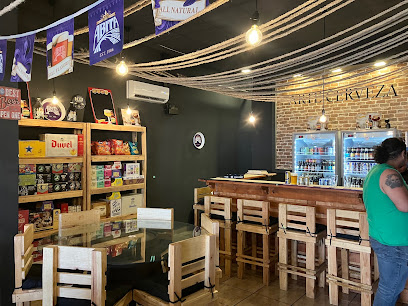
Black Rose
Discover the vibrant nightlife of San Salvador at Black Rose, where great drinks and lively entertainment await every visitor.

Churchill's Bar
Experience the vibrant nightlife of San Salvador at Churchill's Bar, where great drinks and good vibes come together in a lively atmosphere.

La Farmacia
Discover La Farmacia in San Salvador, where unique cocktails and vibrant nightlife create an unforgettable bar experience.

Gitano
Discover Gitano in San Salvador: A lively bar where cocktails, music, and the local nightlife come together for an unforgettable experience.

Local Phrases
-
- HelloHola
[oh-lah] - GoodbyeAdiós
[ah-dyohs] - YesSí
[see] - NoNo
[noh] - Please/You're welcomePor favor/De nada
[por fah-bohr/deh nah-dah] - Thank youGracias
[grah-syahs] - Excuse me/SorryPerdón/Lo siento
[pehr-dohn/loh syen-toh] - How are you?¿Cómo estás?
[koh-moh ehs-tahs] - Fine. And you?Bien. ¿Y tú?
[byen. ee too] - Do you speak English?¿Hablas inglés?
[ah-blahs een-glehs] - I don't understandNo entiendo
[noh ehn-tyen-doh]
- HelloHola
-
- I'd like to see the menu, pleaseMe gustaría ver el menú, por favor
[meh goo-stah-ree-ah behr ehl meh-noo, poor fah-bohr] - I don't eat meatNo como carne
[noh koh-moh kahr-neh] - Cheers!¡Salud!
[sah-loohd] - I would like to pay, pleaseMe gustaría pagar, por favor
[meh goo-stah-ree-ah pah-gahr, poor fah-bohr]
- I'd like to see the menu, pleaseMe gustaría ver el menú, por favor
-
- Help!¡Ayuda!
[ah-yoo-dah] - Go away!¡Vete!
[veh-teh] - Call the Police!¡Llama a la Policía!
[yah-mah ah lah poh-lee-see-ah] - Call a doctor!¡Llama a un médico!
[yah-mah ah oon meh-dee-koh] - I'm lostEstoy perdido
[ehs-toy pehr-dee-doh] - I'm illEstoy enfermo
[ehs-toy ehn-fehr-moh]
- Help!¡Ayuda!
-
- I'd like to buy...Me gustaría comprar...
[meh goo-stah-ree-ah kohm-prahr] - I'm just lookingSólo estoy mirando
[soh-loh ehs-toy meer-ahn-doh] - How much is it?¿Cuánto cuesta?
[kwan-toh kwehs-tah] - That's too expensiveEso es muy caro
[eh-soh ehs mwee kah-roh] - Can you lower the price?¿Puede bajar el precio?
[pweh-deh bah-hahr ehl pree-syoh]
- I'd like to buy...Me gustaría comprar...
-
- What time is it?¿Qué hora es?
[keh oh-rah ehs] - It's one o'clockEs la una en punto
[ehs lah oo-nah ehn poon-toh] - Half past (10)Las diez y media
[lahs dyehs ee meh-dee-ah] - MorningMañana
[mah-nyah-nah] - AfternoonTarde
[tahr-deh] - EveningNoche
[noh-cheh] - YesterdayAyer
[ah-yehr] - TodayHoy
[oy] - TomorrowMañana
[mah-nyah-nah] - 1Uno
[oo-noh] - 2Dos
[dohs] - 3Tres
[trehs] - 4Cuatro
[kwah-troh] - 5Cinco
[seen-koh] - 6Seis
[seys] - 7Siete
[syeh-teh] - 8Ocho
[oh-choh] - 9Nueve
[nweh-veh] - 10Diez
[dyehs]
- What time is it?¿Qué hora es?
-
- Where's a/the...?¿Dónde está...?
[dohn-deh ehs-tah] - What's the address?¿Cuál es la dirección?
[kwal ehs lah dee-rehk-syohn] - Can you show me (on the map)?¿Puedes mostrarme (en el mapa)?
[pweh-dehs mohs-trar-meh (ehn ehl mah-pah)] - When's the next (bus)?¿Cuándo es el próximo (autobús)?
[kwan-doh ehs ehl proh-ksee-moh (ow-toh-boos)] - A ticket (to ....)Un boleto (a ....)
[oon boh-leh-toh (ah)]
- Where's a/the...?¿Dónde está...?
History of San Benito
-
San Benito, like much of San Salvador, was established during the Spanish colonial period in the 16th century. The area was initially part of a larger settlement that focused on agriculture and trade. The colonial architecture and layout of San Benito reflect the influence of Spanish urban planning, with a central plaza that served as a gathering place for the community.
-
By the 19th century, San Benito began to develop a unique cultural identity. This period saw the establishment of various cultural institutions, including schools and theaters, which fostered the arts and education. The neighborhood became known for its vibrant artistic scene, attracting writers, musicians, and artists, contributing to the broader cultural renaissance occurring in San Salvador.
-
The 20th century was marked by political instability in El Salvador, and San Benito was not immune to the effects of civil unrest. During the Salvadoran Civil War (1980-1992), the neighborhood experienced significant hardship. However, the community's resilience was evident as local organizations and residents worked together to support one another and rebuild their lives in the aftermath of the conflict.
-
In the 21st century, San Benito has undergone significant modernization and urban renewal. The area has seen an influx of investment, leading to the renovation of historical buildings and the establishment of new businesses. This development has sparked discussions about gentrification, as long-time residents navigate the changes in their neighborhood while striving to preserve its cultural heritage.
-
San Benito maintains a strong sense of cultural identity, celebrated through various community events and festivals. The neighborhood hosts cultural fairs and artistic exhibitions that showcase local talent, food, and traditions. These events not only highlight the rich heritage of San Benito but also foster community spirit and pride among residents.
San Benito Essentials
-
San Benito is well-connected to other neighborhoods in San Salvador. From the city center, you can take a bus (such as the 29 or 34 routes) that operates frequently and takes around 15-20 minutes. Taxis and ride-sharing services like Uber are also widely available and convenient for direct transport. If you are coming from the airport, a taxi or shuttle service is the fastest option, taking approximately 30-40 minutes.
-
San Benito is a walkable neighborhood with many attractions easily accessible on foot. Public transport options include buses and minibuses, which are economical; however, be prepared for crowded conditions. Taxis are readily available, and for a more leisurely experience, consider renting a bicycle to explore the local parks and cafes at your own pace.
-
San Benito is generally safe for tourists, but caution is advised. Areas with higher crime rates, such as the neighborhoods surrounding the central market, should be avoided, especially after dark. Always keep your belongings secure and be cautious about displaying valuables in public. It's wise to stay informed about local conditions and seek advice from locals or hotel staff.
-
In case of an emergency, dial 911 for police or medical assistance. The nearest hospital to San Benito is Hospital de Diagnóstico. It’s advisable to have travel insurance covering emergencies. For minor health issues or medications, local pharmacies are available and usually well-stocked. Keep the contact information for your country’s embassy or consulate handy.
-
Fashion: Do wear lightweight and modest clothing suitable for warm weather. Avoid overly revealing outfits, particularly when visiting religious sites. Religion: Do respect local customs, especially during religious events. Public Transport: Do give up your seat for the elderly and always greet the driver when boarding. Don't eat or drink on public transport. Greetings: Do greet with a friendly handshake, and a smile is always appreciated. Eating & Drinking: Do try local dishes, especially pupusas, and accept food offers graciously. Don't refuse hospitality as it can offend your hosts.
-
To experience San Benito like a local, visit the Parque del Bicentenario, where you can often find community events and food stalls. Check out the local markets for fresh produce and traditional Salvadoran goods. Engage with local vendors and artisans; they often share stories and insights about their crafts. Don't miss the opportunity to enjoy a coffee at one of the many local cafes, and try to learn a few basic Spanish phrases to enhance your interactions.
Nearby Cities to San Benito
-
Things To Do in La Libertad
-
Things To Do in Suchitoto
-
Things To Do in Santa Ana
-
Things To Do in Chalchuapa
-
Things To Do in San Miguel
-
Things To Do in Gracias
-
Things To Do in Copán Ruinas
-
Things To Do in Santa Rosa de Copán
-
Things To Do in Guatemala City
-
Things To Do in Antigua Guatemala
-
Things To Do in Tegucigalpa
-
Things To Do in Rio Dulce
-
Things To Do in Puerto Barrios
-
Things To Do in Panajachel
-
Things To Do in Lake Atitlán









